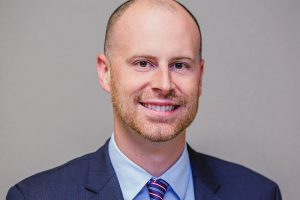Reverse mortgages have long been thought of as merely a last resort for someone’s retirement plan, the only remaining alternative when nothing is left to draw on. Before 2013, lending rules were much different and reverse mortgages got a bad rap for giving borrowers up to 100% of a home’s value.
When the real estate collapse and financial crisis hit by 2008, this led thousands of mortgage loans to go “underwater” (meaning someone owes more money on a loan than the home or property itself is worth).
With the recent overhaul of reverse mortgages in the United States under the Home Equity Conversion Mortgage (HECM) Program, borrowing limits have been lowered to improve the sustainability of loans. Borrowers are also protected adequately with underlying mortgage insurance and screening is done to make sure they have the financial resources to meet the underlying homeowner obligations.
Extensive research on reverse mortgages has been conducted by noted financial advisors like Harold Evensky, Wade Pfau, Michael Kitces, and many others. They have helped educate financial planners and their clients on the benefits of introducing a reverse mortgage much sooner in a retirement plan—for certain people—instead of holding it as a “last resort.” In many situations, the probability of a successful long-term financial plan can be greatly increased by using home equity sooner rather than later.
The core principles that are in play here involve looking at a client’s retirement spending needs and portfolio distribution rates, in conjunction with what is available on their balance sheet. The math behind why this works is that, based upon our current low interest rates, a home that should appreciate at the rate of inflation or more. So it is a reasonable notion to assume that this leaves a safe ratio of debt that is never paid back and accruing interest.
Also, if a person has a mortgage, takes distributions from an IRA, pays income tax, and loses money from an investment portfolio, only to turn around and have to make a principal and interest mortgage payment in an effort to gain equity back on their balance sheet—the math is not favorable.
Scenario #1 – (Taking monthly payments off a Reverse Mortgage) – If the distribution rate of someone’s financial portfolio is high and their house is paid off, one solution (assuming there is substantial equity) is to consider using their home’s equity with a reverse mortgage to pay them a monthly income stream. That then would allow for their portfolio distribution to be lowered. This can lower their tax burden if the income is from an IRA, and it can leave more money in portfolios that will continue to make money for the future.
Scenario #2 – (Using a line of credit off a Reverse Mortgage) – If someone’s portfolio distribution is reasonable and their house is paid off (or they have substantial equity), but they struggle to, for example, make large improvements on their home or purchase something costly like a vehicle, they could use a reverse mortgage to fund these larger goals/needs to avoid having them taken from investment accounts that could then be jeopardized.
Scenario #3 – (Switching a regular mortgage to a Reverse Mortgage) – If someone currently has a mortgage or is buying a home and needs a mortgage, they could consider the reverse mortgage as an option. This could allow for the other assets held in their portfolio to grow, potentially minimize their taxes, and lower their portfolio distribution rates by no longer having to make the principal and interest payment on the loan.
These three scenarios could also be combined in different ways.
To cover some of the rules of the HECM Program, there are now set ratios for the amount someone can borrow based on their age. Younger people have a smaller percentage of funding available to them and older people a larger one. The minimum age requirement is 62. You must live in the home and it must serve as your principal residence. Borrowers must go through a mandatory counseling session to make sure they have the resources to maintain the home, and pay property taxes and homeowner insurance.
For those thinking about it, please note that the reverse mortgage strategy should be discussed with your financial planner and be used responsibly in your financial plan. A reverse mortgage allows homeowners to borrow against the value of their home, creating liquidity from an illiquid asset, and giving them the ability to defer repayment until they have permanently left the home. With a reverse mortgage, you do still own the home and if you choose to sell it in the future (or your heirs do), the loan can be repaid and any equity earned would be received at closing, just like any other loan.
It is also important to shop around, look at and talk to different lenders. Reverse mortgage costs can vary, and closing and set-up costs can be much more expensive than a conventional mortgage. As with any major financial decision, borrowers need to consider different combinations of upfront costs as well as the interest rate on the loan. If you need help making an informed decision about using this practical financial option, just contact your advisor at The Planning Center.



